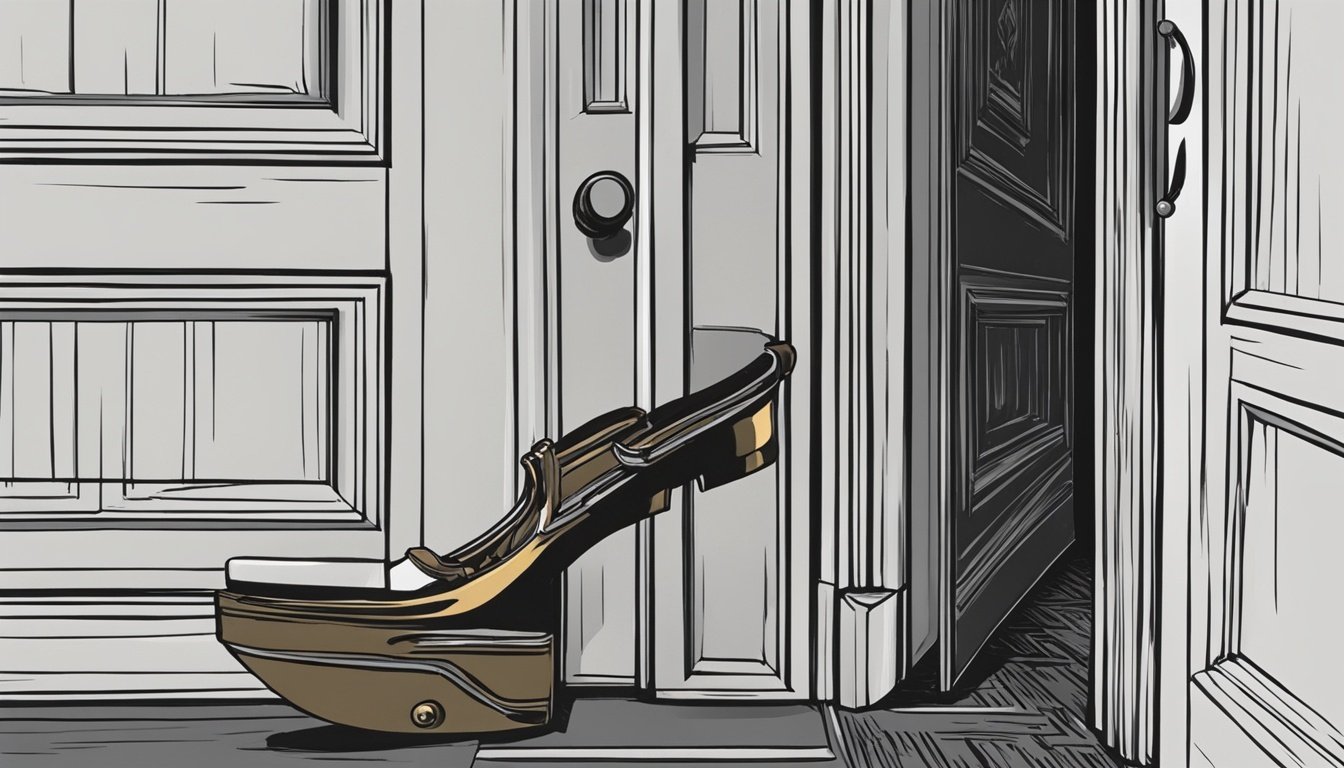Commitment and Consistency: The Foot-in-the-Door Technique
Ever wondered why some ways to persuade people work better than others? It’s all about the power of commitment and consistency. This is what makes the Foot-in-the-Door Technique so effective. But what is this technique, and how does it help in marketing and sales?
The Foot-in-the-Door Technique is a way to persuade people by asking for a small favor first. This makes them more likely to agree to a bigger request later. Studies show it works really well. It can boost customer engagement, increase sales, and even grow revenue.
Key Takeaways
- The Foot-in-the-Door Technique uses commitment and consistency to change behavior.
- It starts with a small request to make people more likely to agree to a bigger one.
- This method can boost conversion rates by up to 113% and increase revenue by 11.4%.
- It can get up to twice as many leads to talk about a product.
- The idea is that people act in line with their past actions and how they see themselves.
What is the Foot-in-the-Door Technique?
The foot-in-the-door effect is a way to get people to agree to a big request by asking for something small first. It works because we like to be consistent with our actions and how we see ourselves. Agreeing to a small request makes us feel committed, making us more likely to agree to a bigger one later.
The Psychology Behind the Technique
This technique uses social psychology ideas like self-perception theory and the norm of consistency. When someone says yes to a small request, they start to see themselves as the kind of person who does that. This makes them more likely to agree to a bigger request to keep up with their actions and image.
A Brief History of the Foot-in-the-Door Technique
Jonathan Freedman and Scott Fraser first tested this technique in 1966. They asked homeowners in Palo Alto to put up a big sign for safe driving. Only 17% agreed right away. But, when they asked for a small 3-inch sign first, then asked for the big sign later, 76% agreed.
Since then, many studies have shown how effective this technique is. It works well for things like donations and helping others. It can make people more likely to say yes to a big request than if they were asked directly.
“In an early experiment at Stanford University by Jonathan Freedman and Scott Fraser in 1966, it was found that individuals subjected to the foot-in-the-door technique were far more likely to comply with a larger request than those who were not exposed to the initial small request.”
Why the Foot-in-the-Door Technique Works
The Foot-in-the-Door Technique works because it uses our deep need for consistency. Once we start with a small commitment, we feel we must keep acting consistently. This comes from how we see ourselves and want others to see us – as steady and predictable.
This method also uses cognitive dissonance, making us change our views to match our actions. By asking for a small first step, it’s easier to lead us to bigger commitments. This is a strong strategy in marketing and persuasion.
The Power of Commitment and Consistency
Research proves the Foot-in-the-Door Technique is very effective. In a 1978 study, only 24% of a control group agreed to participate at 7 AM without a prior commitment. But, 56% agreed to participate before knowing the time. Using the foot-in-the-door method, about 95% showed up as planned, showing its strength.
“A campaign called The Daisy Chain inside The League serves as an example of utilizing the foot-in-the-door technique to increase conversions.”
A 1985 study by Richard Brownstein and Richard Katzev showed the low-balling technique was the best at getting people to donate more. Starting with a small ask and then asking for more was very effective. This shows how important consistency is in changing behavior.
By understanding the psychology behind the Foot-in-the-Door Technique, marketers can use commitment and consistency to reach their goals. This method is great for getting customers to act voluntarily or using past actions and how we see ourselves. It’s a key strategy in marketing.
Applying the Foot-in-the-Door Technique in Marketing
Marketers can use the Foot-in-the-Door Technique to get more people involved and increase sales online. The idea is to get customers to do a small action first. Then, ask them for a bigger commitment later.
Encouraging Voluntary Customer Actions
For example, an email sign-up form that offers a free resource can work better than a popup that forces you to sign up. When onboarding new users, asking for small commitments can make them more open to bigger requests later. This approach helps avoid psychological reactance, where people don’t like being forced.
Leveraging Past Behaviors and Self-Perception
Marketers can use customers’ past actions and how they see themselves to apply the Foot-in-the-Door Technique. Showing customers their past purchases can make them feel loyal. Personalized product recommendations based on this can make them more likely to buy again. But, it’s important to keep the norm of reciprocity in mind. If the second request doesn’t make sense, it could backfire. The technique works best when the bigger ask follows logically from the first action.
“The Foot-in-the-Door Technique is a powerful tool for marketers to encourage voluntary customer actions and leverage past behaviors, ultimately driving increased engagement and conversion rates.”
Using the Foot-in-the-Door Technique in online marketing helps businesses improve their lead generation and onboarding. It helps build strong customer relationships and loyalty over time.
Commitment and Consistency: The Foot-in-the-Door Technique
The Foot-in-the-Door Technique uses commitment and consistency to work its magic. It starts with a small action from customers. This taps into our need for a consistent self-image. It makes us more likely to agree to bigger requests later on. When used right, it can really help with customer engagement, getting more people to buy, and making more money over time.
Studies show that making a commitment can change how we act and see ourselves. For example, a study found that boys who learned playing with a toy was wrong didn’t play with it as much later. Written promises also make us stick to our word more.
Marketers can use this idea by getting customers to do something on their own, like signing up for a newsletter. This small step can make customers more likely to say yes to bigger things, like buying something or signing up for a service. Companies like Amway have used this method to get fewer returns and cancellations by having employees set goals.
But, marketers need to be careful with this technique. It should make things better for the customer and not feel like trickery. Finding the right mix of persuasion psychology, ethical marketing, and customer engagement can help businesses use the Foot-in-the-Door Technique well. This can help build strong customer relationships and get better results over time.
“The more public a commitment is, the stronger the individual’s need to remain consistent with it.”
Examples of the Foot-in-the-Door Technique
The Foot-in-the-Door Technique is a strong strategy for businesses to boost customer engagement and loyalty. It starts with small, easy requests to slowly push customers towards bigger actions. This builds a stronger bond with the brand. Let’s look at some ways this technique works in real life.
Remind Customers About Past Purchases
One way to use the Foot-in-the-Door Technique is to remind customers of their past purchases or brand interactions. Showing a list of past buys in a sidebar can make customers feel connected to the brand. Adding a game-like element, like asking customers to add new items to a wishlist, can make them feel more loyal.
Make Relevant Recommendations
Marketers can also use the Foot-in-the-Door Technique with product recommendation engines. Instead of generic suggestions, tie them to the customer’s past behaviors and purchases. Saying “customers who bought this also bought…” can make customers feel like they’re part of a group.
Consider Adding Small Gifts
Offering small gifts or incentives is another way to use the Foot-in-the-Door Technique. Greeting visitors with a free product sample or consultation can get them to take a small step. This also uses the reciprocity effect, making customers want to “give back” for the freebie.
Use Sign-up Forms
Sign-up forms are a great example of the Foot-in-the-Door Technique. Asking for an email address for a content download is an easy first step. This sets the stage for bigger actions, like signing up for a webinar or buying something. Make sure the first request is simple and quick to avoid any pushback.
The Foot-in-the-Door Technique works by getting customers to start with small actions. This makes them more likely to do bigger things later. By using these strategies, businesses can turn new customers into loyal ones. They do this by building on small commitments and rewarding customers for their brand support.
Conclusion
The Foot-in-the-Door Technique is a strong way to change consumer behavior. It uses our need for consistency to get us to do more. By starting with small actions, marketers can lead customers to bigger commitments.
Brands like 24 Hour Fitness, FitBit, and Amazon have seen big growth using this method. They know how to make customers stick around. By understanding this approach, companies can make their marketing better and more focused on what customers want.
But, it’s important to use this technique honestly and clearly. Avoid tricking or forcing customers into things. By always putting the customer first and offering real value, businesses can use psychology of persuasion, marketing strategy, and customer engagement in a good way. This keeps their ethical influence strong.
Source Links
- The Definitive Guide to the Foot in the Door technique (learn how to 2X your conversion rate) | Conversion
- The Foot In The Door Technique Explained with Examples
- Persuasion Strategies: Foot-in-the-door & Door-in-the-face Techniques – Concept | Social Psychology | JoVe
- Foot-in-the-door technique
- Foot-in-the-Door As A Persuasive Technique
- Things marketers need to know: The foot-in-the-door technique
- What is the foot-in-the-door technique and why does it work?!
- Low-Ball Technique in Psychology | Definition & Example – Lesson | Study.com
- Foot in the door marketing
- What is the Foot-in-the-door Technique?
- How can you use the foot-in-the-door technique to close more sales?
- Consistency and Commitment
- Techniques of Compliance in psychology
- 7 Examples of Commitment and Consistency in Marketing
- 5 Commitment and Consistency Examples in Marketing
- Understanding the Foot-in-the-Door Technique in After-Sale Upsells







